|
History menu >
Biography of Alice Kate Farmer, schoolmistress and town councillor
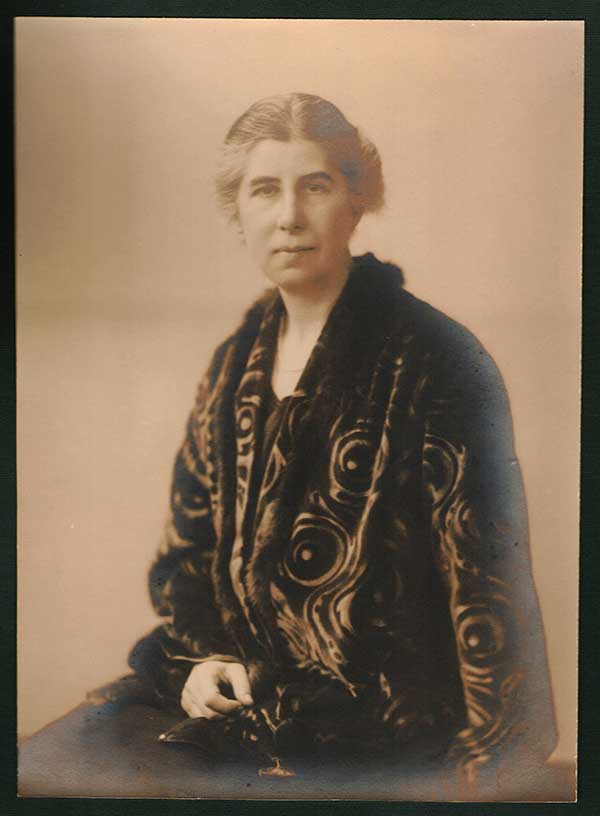 Contents Contents
Overview
Principal of school
Founder of Malvern WI
Sponsor of National Kitchens
Business partner Eva Leather
Public service
Family
Death
References
Photo right: Alice Kate Farmer courtesy of Malvern Museum
While browsing through a Trade Directory of
Worcestershire we came across the name of Alice Farmer
(1865 - 1944) who ran a school for young ladies at Langland House in Graham
Road, Great Malvern, between about 1901 and 1912.
The curator of Malvern Museum told us that reports in the
Malvern Gazette suggested that Alice Farmer had been very active in town
affairs and had been one of the founders of Malvern Women's Institute, as was her
friend and teaching colleague, Miss
Eva Hazlehurst Leather, who lived with her.
Both ladies seem to have trained in Oxford and had family
connections to academics and clergymen.
The
1911 census recorded that Alice Kate Farmer was proprietress of a girls'
boarding school at Langland
House, Malvern. Also in the household were Eva Hazlehurst Leather, assistant
school-mistress; Gladys Farmer, sister; 18 pupils aged between 14 and 18
years and 5 servants.
The 1911 census recorded that Langland House had 23 rooms
and was probably located between the Montrose Hotel and Buckingham House on
the west side of Graham Road. We wondered whether the building might now be
called Clanmere, which is the twin of Buckingham House next door which is
now a dental surgery. Stevens directories, copies of which are held by
Malvern library, confirmed this and showed that by 1917 Langland had become Fairholme nursing
home, later renamed Clanmere (ref 13).
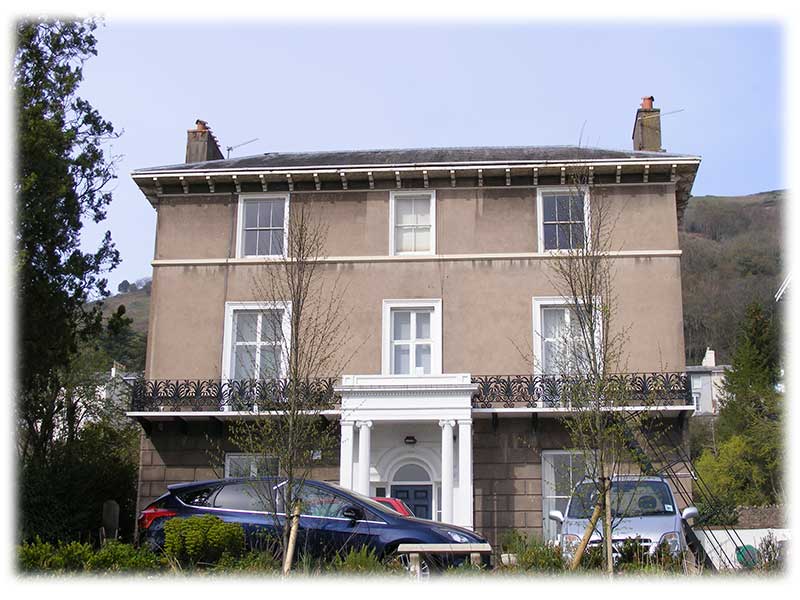
Langland House, now named Clanmere, 2016
In 1941 Julie Maria Clancy, born Bombay India, was living at
Clanmere. She was the Aunt of colonial officer
Gerald Gallagher (1912 - 1941) who wondered in 1940 if bones found on
Nikumaroro were those of aviator
Amelia Earhart who had gone missing in 1937.
Possibly, prior to 1900, Langland had been named Lambert
House.
Langland School was first recorded in Kelly's trade
directory of 1904, and last recorded in 1912. As there appears to be no
mention of her school after 1912, we wonder if either her father gave her an
allowance or she inherited sufficient funds that she no longer needed to
take pupils.
There was a school sanatorium at 'The Hostel'
across the road between 'The Oaks' and 'Longfleet', and we think , after the
school closed, Alice Kate Farmer moved to the slightly smaller Hostel renaming it
Langland.
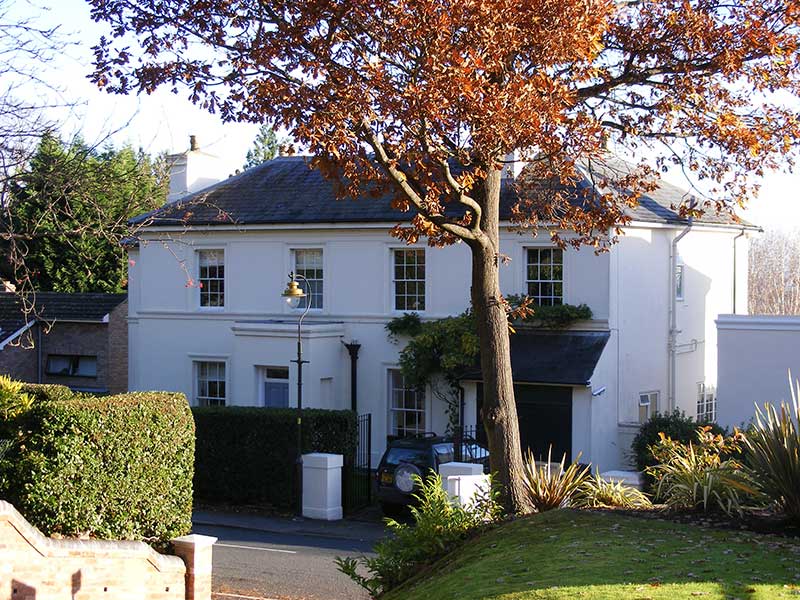
Langland, the later home of Alice Farmer
Local artist
Catherine
Moody (1920 - 2009) recalled visiting Alice Farmer and Eva Leather at
Langland about 1937, commenting on a garden room and staircase added to
the house to a design by local architect
Troyte Griffith.
Alice continued to live at Langland (previously The
Hostel) until her death
in 1944.
The book 'Growing up in England' (ref 1) contains an
interesting account by Francesca Chenevix Trench of attending Langland
school between 1906 and 1908. Francesca was by all accounts a rebellious
teenager who disliked the discipline imposed by Miss Farmer, but enjoyed
history lessons given by Eva Leather.
Artist and illustrator
Francesca Georgiana Chenevix Trench (1891 - 1918), known as Cesca, was
the grand-daughter of
Richard Chenevix Trench, Dean of Westminster and Archbishop of Dublin.
She became an ardent supporter of home rule for Ireland, but very sadly died
of Spanish Flu in 1918, shortly after her marriage.
Cesca's brother,
Major
Charles Reginald Chenevix Trench (1888 - 1918), Sherwood Foresters,
educated at Charterhouse and Merton College Oxford, was killed in the Great
War. It was somewhat ironic that earlier the Sherwood Foresters had been
dispatched to Ireland in 1916 to quell the
Easter
Rising!
At one time, Malvern WI met at a
property in Bank Street opposite the Nag's Head pub, see photo below.
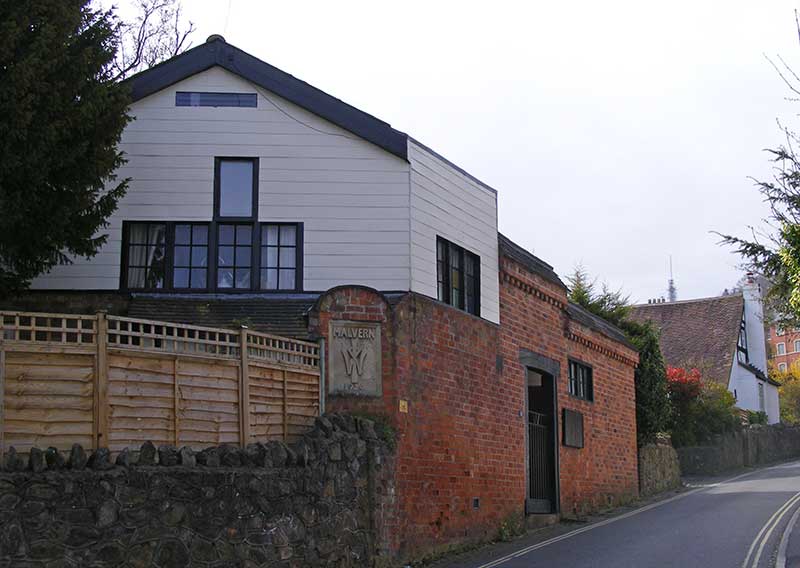
The Women's Institute movement began in Canada
about 1897 as a means of bringing women in isolated communities together and
passing on skills. Perhaps influenced by the outbreak of war, the first WI
in the UK was founded in 1915, at Llanfair PG on the island of Anglesey.
Madresfield Womens' Institute was one of the first to be
formed in Worcestershire (ref 8). It formally came into being on 16th April
1917 when Countess Lettice Beauchamp signed the rules at the village school.
The first meeting had taken place more than a year previously on 7th April
1916 in the Boardroom of the Beauchamp Almshouses at Newland. In those early
days women from the three parishes of Madresfield, Guarlford and Newland
became members. The first secretary was Annie Madin, a teacher at
Madresfield school, whose sister Mary was the headmistress (ref 9).
Madresfield WI closed in 1993 due to falling numbers;
Guarlford became an independant Institute in 1941 and still exists today.
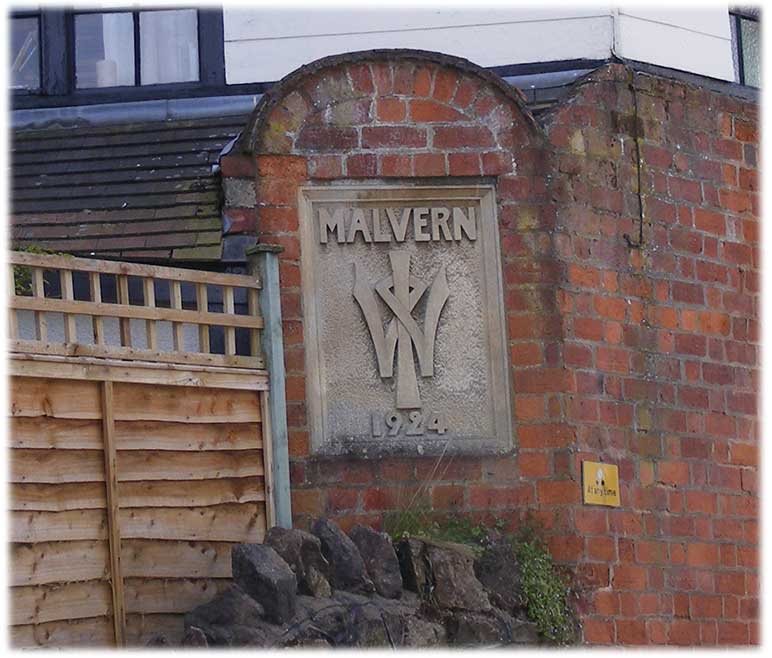 The short history of Madresfield WI (1917 - 1977) by
Dorothy E Williams, who had been an archivist at Madresfield Court, relates that
Malvern WI was formed at the Girls' Club in
Newtown Road in 1918 and that it too had Lady Beauchamp as President, when
in May she presented 50 membership cards. Later Miss Butler was described as
the first 'Chairman' and President. The plaque on the wall of the meeting room suggests
Malvern WI met there from 1924, by which time there were nearly 300 members. The short history of Madresfield WI (1917 - 1977) by
Dorothy E Williams, who had been an archivist at Madresfield Court, relates that
Malvern WI was formed at the Girls' Club in
Newtown Road in 1918 and that it too had Lady Beauchamp as President, when
in May she presented 50 membership cards. Later Miss Butler was described as
the first 'Chairman' and President. The plaque on the wall of the meeting room suggests
Malvern WI met there from 1924, by which time there were nearly 300 members.
The photo below shows the simple art deco gate of the Malvern WI
meeting rooms at 38 Bank Street, with the letters W I
incorporated into the top of the metal-work.

We are told that both Alice Farmer and her friend Eva
Leather were amongst the founders of Malvern WI in 1918. Alice was the secretary for
the first 19
years and President for 2 years (ref 12); today there are several WIs
in Malvern.
National Kitchens were a British Goverment initiative of 1917
intended to provide food to the poorer classes at a reasonable price. At
that time, with men away and food in short supply, many mothers were having
difficulty feeding their families. We gather these kitchens were not intended to be a charity and the State expected National Kitchens to be run as businesses
and cover their costs.
The Curator of Malvern Museum told us that Miss Alice
Farmer was a very active organiser in the Great War, interestingly
representing the Women's Agriculture Committee locally. To quote:
She appeared regularly in the local newspapers, urging
the community to get behind the war effort. She was also a founder member of
the WI in Malvern, became their secretary and it is believed committee
meetings were held at her house, Langland, where she lived with another WI
founder, Miss Leather.
Below is a transcription of a report from the Malvern
Gazette, May 17th 1918, which tells of Alice's involvement in the Communal
Kitchens in the area, a feature that had become essential with dwindling
food supplies and malnourished children:
Miss Farmer presented a report on the Communal
Kitchens. She stated that the North Malvern and Cowleigh kitchen was opened
on November 28th and had been running for 18 weeks. It was started in the
first instance for the large two neighbouring schools and had to work under
discouraging conditions, as one or other school had been closed for ten out
of the eighteen weeks.
A certain number of portions were sold to the adults
in the district, but it was disappointing that the kitchen had not yet
developed on these lines as fast as they expected. About 4,800 meals were
served. The working expenses amounted to £12 12s 8d, and the profits on the
food were £6 7s 3d. The kitchen therefore failed to pay its way by £6 1s
5d, bearing out the universal experience that it was almost impossible for
a kitchen to cover its expenses if the daily average fell far short of 100.
The Barnards Green kitchen was opened on January 10th and had been running
for sixteen weeks. It was started primarily for children and was closed
during the school holidays, but it was now developing as a National Kitchen,
and an increasing number of portions was sold every day. The meals served
numbered 5,309. Working expenses amounted to £9 6s 2d, and the profits on
food were £10 19s 7d. The kitchen therefore paid its way with a balance of
£1 15s 5d. This was extremely creditable ...
About West Malvern .... The
meals served numbered 3,424. The working expenses were £4 17s 6d and the
profits on food were £9 10s 2d. There was therefore a balance to the good of
£4 12s 8d towards paying off the equipment – a most satisfactory result in
so short a time. (In the above figures it should be noted that the cost of
gas was not included).
The cost of the equipment of the kitchens was as
follows:- North Malvern and Cowleigh £7 14s 1d; Barnards Green £13; West
Malvern £16 6s 9d (of which £5 3s 6d had been most generously subscribed by
the inhabitants of the village). The very small cost for North Malvern and
Cowleigh was owing to the fact that a few utensils were in hand, bought out
of a grant made by the Food Economy Committee in 1917.
The report went on to
state that £25 was considered to be the smallest sum on which it was
possible to equip a kitchen, but there had been some loans and many gifts,
and the Urban District Council had very kindly allowed the Committee the use
of any gas stoves and boilers that were in stock. The rooms had in each case
been lent, rent free, so that the grant of £20 made in the autumn had so far
been sufficient to meet all requirements. Miss Farmer concluded her report
thus:-
It is impossible to speak adequately of the work of the house-keepers
for the three kitchens. They have given whole-heartedly of their time, their
brains, and their strength, and while thanking them one can only
congratulate them on being able to render such a splendid bit of national
service. Each kitchen also has a band of voluntary helpers, who come in for
a time to assist with the childrens' dinners, and regular help of this kind
is of great assistance.
Miss Farmer said she had received a letter from Miss
Smith, the head teacher of Great Malvern Church of England Schools, who
wrote that the children attending the schools were now doing without any
lunch, with the exception of twelve delicate ones who were given hot milk
daily. All had derived much benefit from the hot dinners provided specially
for them, and they, with their parents, fully appreciated and valued them.
She wished to thank Miss Farmer and her helpers most heartily on behalf of
the school-children who told her how much they enjoyed the food. The health
of the children had had certainly improved with the regular hot meals. The
elder boys had been very keen on the dinners and were regular customers.
The
Chairman said that Miss Farmer had given the Committee a most interesting
report, showing that very useful work was being carried on. The Committee
were very grateful to all who had helped. There was some discussion with
reference to establishing a National Kitchen at Malvern Link, and the
Sub-Committee was authorised to prepare a scheme to be submitted to the
Ministry of Food.
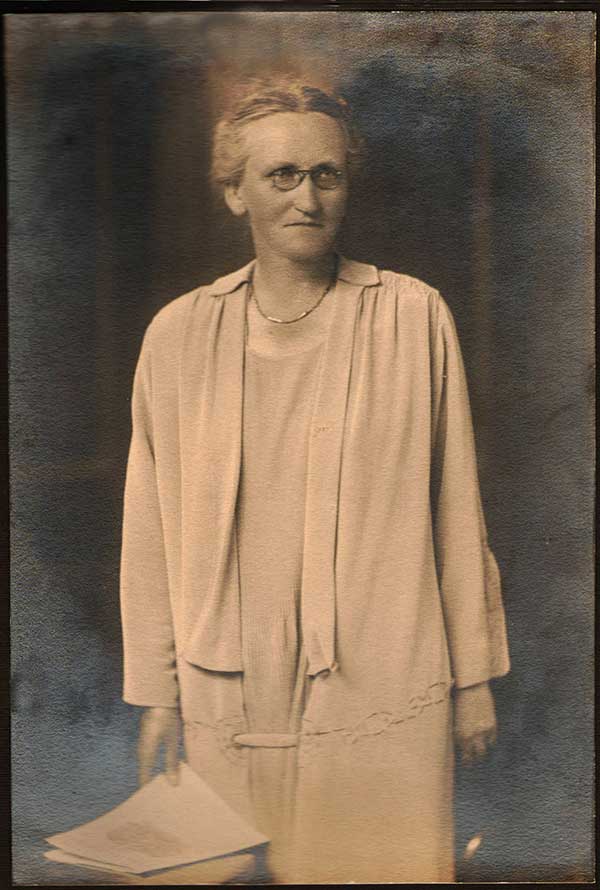 The 1911 census records that Eva Hazlehurst Leather (1871
- 1962), see photo right, courtesy of Malvern Museum, who was born
Waterloo, Lancashire, was an assistant school-mistress at Langland
House, and it seems that she and
Alice Farmer developed a friendship which would last for the rest of their
lives. The 1911 census records that Eva Hazlehurst Leather (1871
- 1962), see photo right, courtesy of Malvern Museum, who was born
Waterloo, Lancashire, was an assistant school-mistress at Langland
House, and it seems that she and
Alice Farmer developed a friendship which would last for the rest of their
lives.
Eva was the fourth daughter of wine merchant Isaac Leather, who
died in 1876 when Eva was only four. Her sisters were Maud Mary, Ethel
Elizabeth, Mabel Eliza Howard, and Mary Steward. Their mother remarried, to Thomas Arnold
Goodwin, a wealthy solicitor by whom she had two further children, Una Mary,
and Dorothea, Eva's half sisters.
In 1905 Dorothea married clergyman John William Coke
Norris. Crockford's Clerical Directory of 1932 records that John was educated at
St John's College Oxford BA 1897; curate of St Marks, Waterloo, Liverpool
1900 - 1903; Assistant Master Harrow School 1902 - 1930.
In 1891 Eva and two of her sisters were staying with
their stepfather's sister Una Margaretta Goodwin in Oxford. The census
records that the children were supported by their mother and Eva had a
scholarship.
At that time Alice Kate Farmer was an assistant
school-mistress in Oxford, and possibly that's where they first met.
Eva's elder sister Mabel Eliza Howard Leather married John
Underhill Powell in 1904, a classical lecturer and tutor educated at St
John's College Oxford. Their daughter Mary Howard Powell married academic
Rev Ralph Edward Cunliffe Houghton (1896 - 1990) who is recorded in
Crockford's Clerical Directory of 1932:
Houghton, Ralph Edward Cunliffe, late school of Christ
Church Oxford, 1st Cl Mods, 1917, BA (2nd Cl Lit Hum) 1921, MA and Matthew
Arnold Essay Prize 1923. Westcott House Cambridge 1924. Priest 1926
Canterbury. Assistant Master of St Peter's College Westminster 1921 - 1925
and 1926 - 1928. Vice Principal of St Peter's Hall Oxford from 1928.
This seems rapid advancement for an academic young man
who became an author and editor of several books. On 1st January 1945 he
would conduct Alice Farmer's funeral service at Great Malvern Priory.
The 1911 census records that Eva's sister Ethel Elizabeth
Leather (1867 - 1941) became a social worker, living in Lambeth, and we wondered
what role she took in helping the poor of the district.
When the school closed, and was sold, Eva moved across
the road to a smaller property named 'The Hostel' which Alice Farmer renamed
'Langland' after her old school.
Eva Leather continued to live at Langland in Graham Road,
Great Malvern, until her death in 1962. Her married niece, Mary Howard
Houghton, was one of her executors.
Eva's death was reported in the deaths' column of the
Malvern Gazette on Friday 29th June 1962:
LEATHER on June 25th 1962 Eva Hazlehurst Leather of
Langland Malvern aged 90.
The same issue contained the following tribute:
Miss E H Leather
Malvern has lost this week one of its outstanding women,
who, in the past and until advancing age slowed her up, did much social and
public work.
Miss Eva Hazlehurst Leather died aged 90 years, on
Monday. She had lived for many years at 'Langland', Graham Road, which she
generously made available for evening meetings of the Anglo French Society.
She and her partner, the late Miss A K Farmer, ran a most successful girls'
boarding school. She was also a former president of Malvern WI.
The funeral service was at Holy Trinity yesterday
(Thursday), followed by cremation.
In a personal tribute AWMB writes:
As one who has known Miss Eva Hazlehurst Leather since my
childhood, I should like to pay a tribute to a great and charming
personality.
Whilst I was still a pupil at Lawnside, she and her
partner Miss Farmer, retired from their splendid girls' boarding school,
Langland House, on the west side of Graham Road, where their influence upon
their pupils was apparent, but they continued to live in Malvern. Until
recently Miss Leather kept up with all her old girls, and took a quiet
interest in the activities of Malvern, particularly in those of a musical
nature, such as the Malvern Concert Club.
Her love of beauty, combined with a very wise and kindly
outlook, was an inspiration to all those who came into contact with her,
and I for one, shall sorely miss her graciousness, sincerity, and brilliant
brain, which were so apparent until a week or two before her death.
Malvern can boast of many wonderful people who, like Miss
Leather, have lived to be over 90 years of age 'underneath the Malvern
Hill', but none, surely, have served their generation better than she, who
leaves behind her the cherished memory and lasting influence of a
great-hearted personality, for which we shall ever be grateful.
We believe Alice Kate Farmer retired as headmistress of Langland House School in
1912 and thereafter devoted herself to town affairs, serving on many local
committees. Mention has already been made of her support of National
Kitchens during WWI. Alice was also appointed Hon Sec of the Malvern branch
of the
Charity
Organisation Society, and she served as secretary of the Malvern Branch of
the National Council of Women.
The National Council of Women had its origins in social
work among women and girls in industrial towns by associations of women
mainly coming from the upper middle classes. This work led to the formation
in 1895 of a national organisation known as the National Union of Women
Workers, which in 1918 was renamed the National Council of Women (ref 11).
In those days women did not have equal rights, and in 1918 voting was only
extended to women over 30 who were either married or property owners.
In 1920, Alice became Councillor for the Trinity
ward of the Urban District Council (UDC), remaining in post for the rest of
her life, eventually becoming vice-chairman of the UDC (ref 12).
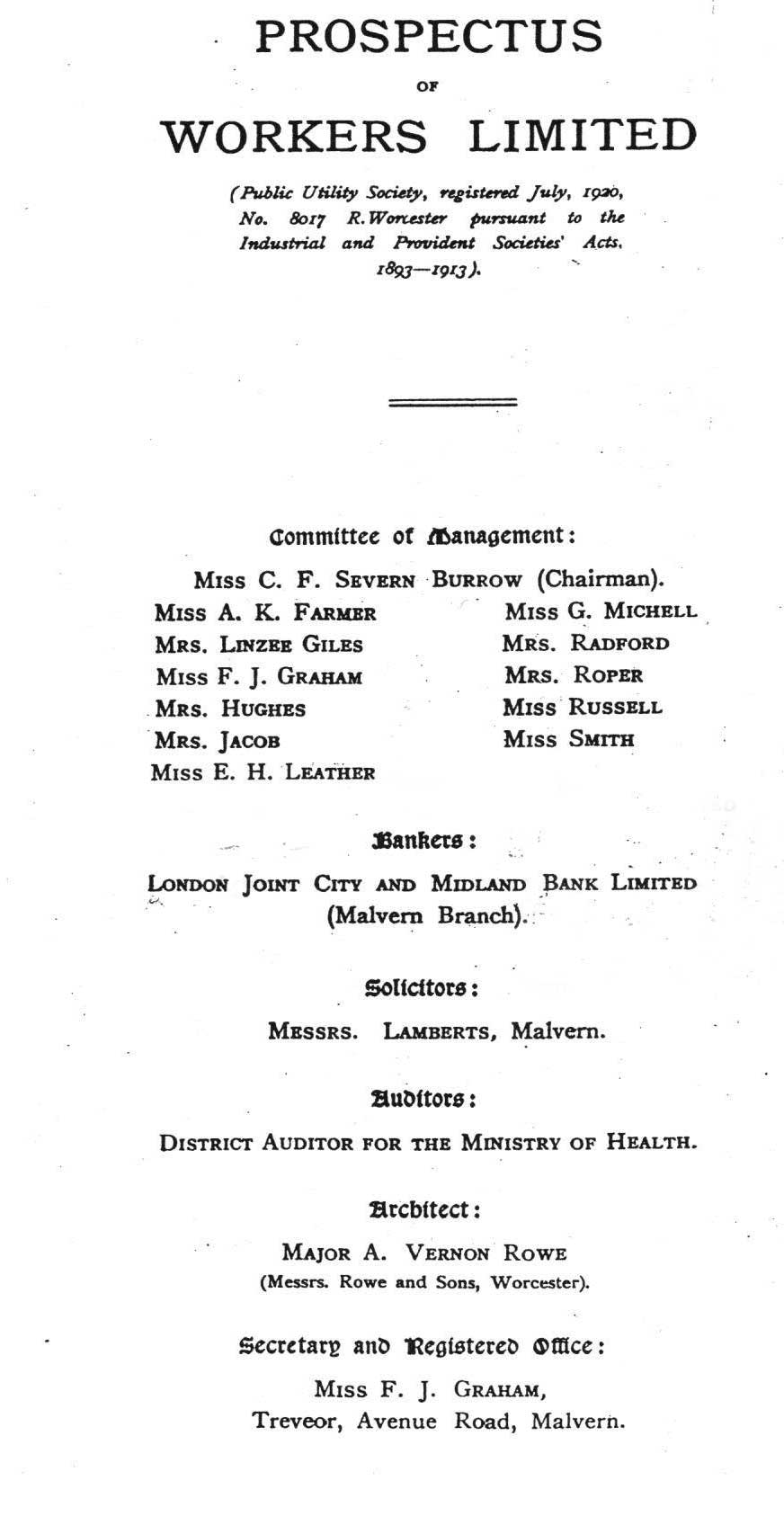 Alice
was one of a group of prominent women, led by
Catherine Severn Burrow, who, in the aftermath of the Great War, founded a Public Utility Society known as
'Workers Ltd'. This took advantage of a government scheme and its aim was to build compact and well equipped homes where single women,
such as matrons, nurses, teachers, civil servants, companions and social
workers, would have the comfort and satisfaction of independence. See cover
of prospectus opposite; click image to enlarge. Alice
was one of a group of prominent women, led by
Catherine Severn Burrow, who, in the aftermath of the Great War, founded a Public Utility Society known as
'Workers Ltd'. This took advantage of a government scheme and its aim was to build compact and well equipped homes where single women,
such as matrons, nurses, teachers, civil servants, companions and social
workers, would have the comfort and satisfaction of independence. See cover
of prospectus opposite; click image to enlarge.
The first development in Malvern, known as Pickersleigh
Close, was in Malvern Link.
A later scheme, circa 1927, provided bungalow flats for
retired women at Barnards Close off Geraldine Road in Barnards Green,
opposite the Chase School (ref 11); see image below.
Both developments are now managed by the
Barnleigh Housing
Association.
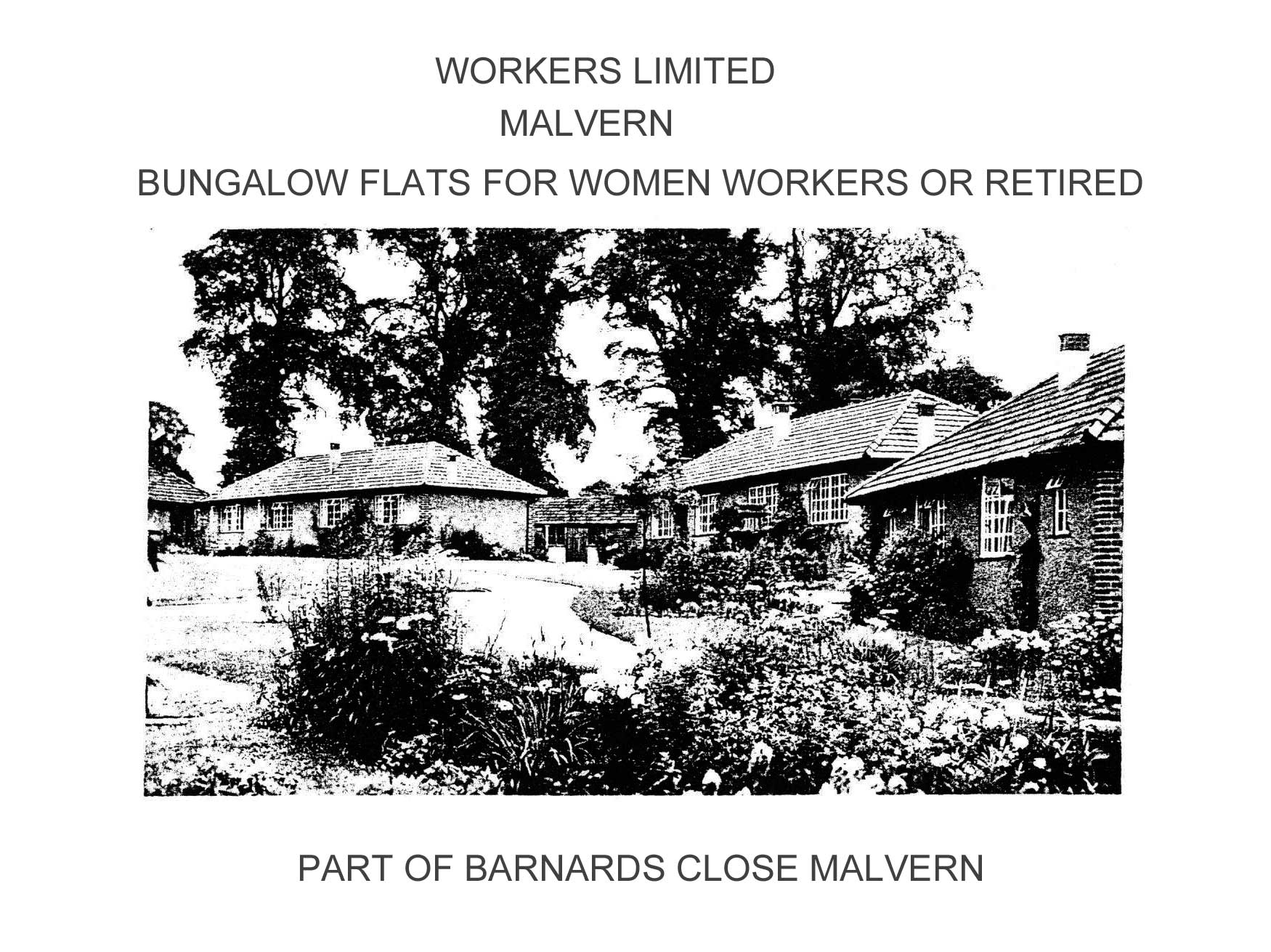
Alice Farmer was Chairman of the Public Health committee
from June 1937, Vice-Chairman of the Public Library Committee, Chairman of
the Managers of the Malvern Council School, and was a Governor of Hanley
Castle Grammar School, and of the Lyttleton School. We wonder how she found
the time!
(Malvern Council School was probably the school we
know now as Great Malvern Primary on the corner of Pickersleigh Road and
Lydes Road, Barnards Green, which had opened in 1916. The only other Council
school in Malvern at that time was in Somers Park Avenue.)
So how was it Alice came to afford to live in Malvern?
The origins of Alice Kate Farmer and her family are
somewhat obscure. The census records that Alice was born on the island of Mauritius,
in the Indian Ocean, about 1866. Mauritius was then a strategic base for
trade between Europe and the Far East. The 1939 Register lists her as a
retired teacher born on 31st October 1865.
In 1866 there had been a sudden and severe epidemic of
Malaria, killing tens of thousands of people, and it's possible that
Alice's mother either perished from Malaria there, or died in childbirth.
In 1871 Alice, aged 5, was living in Cradley in the household of
schoolmistress Sarah Stainton aged 29, and her assistant Janet Bell who was
born at Arthuret near Carlisle.
Ten years later the 1881 census records Alice aged 15 as
a boarder at the home of widow Emily Smith in St Leonards Hastings. Also in
the household were two teenage daughters Emily, and Edith Kate, two visitors,
two other young girls, a cook and a housemaid. Emily Smith was the daughter
of sugar broker William Haslehurst, and the widow of clergyman John Pound
Smith who had died at Broomfield vicarage, Ongar, Essex on 10th October 1878.
The 1891 census records Alice aged 25 years as an assistant school-mistress lodging in Oxford with Rose Katherine Jones, the
daughter of Rev
Hugh Jones Residentiary Canon of St Asaph and Rector of LLanrwst.
Later that year Rose Katherine Jones married Frederick
Arthur Wells at Llanrwst. The 1911 census recorded that he was a Maths Tutor
and she was then a Music Teacher.
Father
Mention of Alice's sister Gladys in the 1911 census
provided a clue to the identity of their father. Further investigation led
us to conclude that Alice was the daughter of clergyman Rev James Farmer
(1840 - 1923), by his first wife, who possibly died not long after Alice's
birth.
James had been born just south of the Malvern Hills at Redmarley.
He married, second, Kate Ellie Gray at Hartlepool in 1882, by whom he had
five further children. Kate's father was wealthy
Sir William Gray JP DL, the son of a draper who made his fortune by
investing in ship building ventures and became Mayor of Hartlepool.
James was educated at Magdalen Hall and New College
Oxford. The record of Alumni lists:
Farmer, James, 5th son of William of Redmarley,
Worcestershire, gent. Magdalen Hall, matriculated 20th March 1860 aged 27;
New College BA 1871, MA 1875, Vicar of Nottingham St Paul 1880.
Possibly there was a transcription error and he was 21
when he was accepted into the university in 1860. Strangely it was not until 11 years later that he gained a degree;
midway through his studies Alice is born in Mauritius about 1866 which makes us wonder whether he
travelled abroad on missionary work, such as with the Universities' Mission
to Central Africa (UMCA), as part of his training.
James is described as the
5th son of William Farmer, gentleman. We think James might possibly have
been the 5th son of agricultural labourer William and Anne Farmer who,
without sponsorship, could not have afforded to send James to university.
In middle age, William and Anne Farmer became servants to Rev
Thomas Palling Little, Curate of Oxenhall and Pauntley, near Newent, in
Gloucestershire. Thomas Palling Little had been educated at Trinity College,
Oxford, BA 1841, priest 1842. We wondered if perhaps Rev Little found a way for James to be
educated at Oxford.
Rev Little had married Ann Esther Maria daughter of Lt
General,
Sir Joseph Thackwell,
GCB, KH, Col, 16 Lancers; Anne died at Edge
Vicarage on 12 June 1902 aged 69. Rev Thomas Palling Little, who for 55 years
was pastor of Oxenhall with Pauntley, later of Edge diocese, died on Christmas Day
1903 aged 87 years.
James' entry in Crockfords Clerical Directory reads:
New College Oxford BA 1871, MA 1874, Deacon 1871 Priest
1872, Curate of Holy Trinity Nottingham 1871 - 1879. Vicar of St Paul's
Nottingham 1880.
The 1871 census records James, aged 30 years, as a widower
and student of theology, and a visitor at the home of banker and farmer John
P Dicker of West Molesey, whose son Arthur was also an undergraduate at
Oxford. The 1881 census recorded James as a widower and vicar of St Paul's Nottingham.
Rev James Farmer must have taken a step up in the world
by marrying Kate Ellie Gray and perhaps it was through this alliance that he was able to help
his eldest daughter Alice Kate Farmer set up her school at Langland House in Great Malvern.
In 1911 James aged 71 years embarked as an unaccompanied
passenger on SS Baltio at Liverpool, bound for New York; we don't know why.
The Rev James Farmer, latterly of Lucan House, Sharow, near Ripon,
died on 1st March 1923 leaving effects of £3,977. His executor was his
eldest child Alice Kate Farmer of Great Malvern.
Half Siblings
Alice Kate Farmer had three half brothers and two half
sisters who were significantly younger than she was, coming from the second
marriage of her father. Possibly to them she was more like an aunt than a
sister.
Alice's oldest half-brother William Gray Farmer was born at Nottingham in 1883. The
1911 census records him as a pupil aged 27 years at Paunton Court, Bishops
Frome, lodging with Francis W J Firkins, a hop grower. Presumably he
was learning the trade of hop farming. We don't know what he did during WWI,
but he survived the war and Trade directories record him living at
Withington Court, Hereford until 1934. A passenger list records him
arriving at Plymouth from Port Said in 1929.
The next, John Hall Farmer (1885 - 1950), married Marianne Firbank
King in 1913. In 1921 he became a Free Mason joining Harte Lodge West
Hartlepool; the register describes him as a marine engineer. Later a passenger
list describes him as an engineer of West Hartlepool, arriving at Plymouth
from Marseille in 1924.
Gladys Margaret Farmer (1887 - 1972) was staying with her
half sister Alice Kate Farmer at Langland School in Great Malvern at the
time of the 1911 census and she was an executor of Alice's will. One
imagines they were close friends. In 1914 Gladys married surgeon Lawrence
Thompson Dean MRCS, who had been educated at Cambridge University. During WWI
he served as a Captain with the Royal Army Medical
Corps in Malta and in East Africa.
Alice's younger half sister, Agatha Mary Farmer (1890 - 1953), married company director
Charles Sabine Baring-Gould at Ripon in 1913. He was born in Natal South
Africa and educated at Sherborne and Trinity Cambridge. His father was a
director of De Beers Consolidated Mines and a cousin of clergyman Rev Sabine
Baring-Gould who is noted for writing the hymn 'Onward Christian Soldiers'.
Sadly, Alice's youngest half brother, 2nd Lt James Ingleby
Farmer, was killed in action near
Festubert on 9th May 1915, serving with the Kings Royal Rifle Corps.
This youngest son of Rev James and Mrs Kate
Farmer, then living at Lucan House, Ripon, Yorkshire, was born 1895 in Nottingham, educated
at St. Aureleus (Bakewell), Loretto School (Edinburgh) and Clare College,
Cambridge (1913 – 1914). His name appears on the
roll-of-honour in Ripon town hall. He was remembered again twenty four years later on 9th May 1939
when a
touching notice appeared in The Times:
In memoriam - on active service
Farmer - In loving memory of James Ingleby Farmer (Bob)
2nd Lt KRRC who gave his life for his country near Festubert on 9th May 1915
aged 20 years.
Sadly the publication 'Malvern in the Great War 1915'
(ref 10) records that Private 1172 Ernest Wilmot Scallon, educated at
Malvern College, 2nd King Edwards Horse was killed a fortnight later at Festubert. He was born in Malvern the son of Edward Brand Scallon, secretary and
school-master, Malvern College. Ernest had been farming in Argentina and had
returned to England at the outbreak of war. His brother Francis was injured
but survived the war and became a school-master. His brother Harold Edward
Scallon, educated at Queens College Cambridge, became a clergyman and was a
missionary in Canada. They were nephews of
Sir Robert Irvin Scallon GCB KCIE DSO who had served in the
Indian Army.
The death of Alice Kate Farmer was
announced briefly in The Times:
Farmer - on Dec 29th 1944, suddenly at Langland Malvern
Alice Kate Farmer in her 80th year
Alice's executors were her friend Eva Hazlehurst Leather,
her half sister Gladys Margaret Dean, and solicitor John Bernard Watson
Lambert. She left effects of £36,974 which in those days was a considerable sum for the daughter of a
once poor widowed clergyman.
A tribute to Alice was published on the front page of the
Malvern Gazette on Saturday 6th January 1945, which continued on to page 4.
It was entitled:
Death of Miss A K Farmer
'Public Service for Malvern'
The obituary records that she was indeed the daughter of
Rev James Farmer, latterly of Lucan House, Ripon, and that Alice had been
educated at Clifton House School, Newnham College Cambridge, and Oxford High
Schools. It mentions:
After retiring as headmistress of Langland House School, she gave
all her time to the welfare of the town, particularly with regard to the
'smaller' and children.
Click
to read Alice K Farmer's obituary in full
The Malvern Gazette of February 10th 1945 recorded
Councillors were considering fixing a plaque in memory of Alice to the bird bath in the Rose Garden of
Priory Park, which she had helped create. Others felt that a summer-house
might be a more fitting memorial.
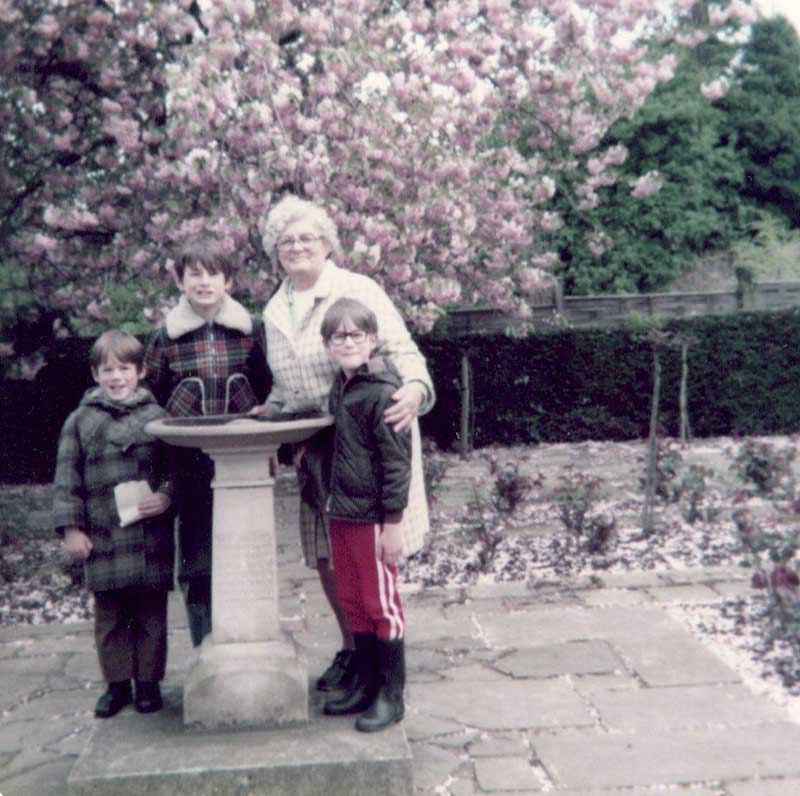 Sadly
the Rose Garden no longer exists in name as circa 2012 the southern edge of
Priory Park was redeveloped by the Town Council. Sadly
the Rose Garden no longer exists in name as circa 2012 the southern edge of
Priory Park was redeveloped by the Town Council.
The area remains a 'secret' walled garden though now it
importantly lacks rose beds, the bird bath and seating. The bird bath,
and any memorial to Alice, have disappeared but the attached photo shows what
it looked like.
Nan and grandchildren standing by the bird bath in
the Rose Garden, May 1982
Alice would have witnessed several developments in her
lifetime which we take for granted, including for example the introduction
of a public electricity supply to Malvern in 1904; telephones for
businesses, professional people and the wealthy; powered flight; the
appearance of motor vehicles and the first garages; and public broadcasting
of radio programmes by the BBC.
She would also have read reports of the Boer wars and
felt the impact of WWI on life at home. Sadly she would also have seen war
come again in 1939; witnessed military units coming to Malvern for a second
time; experienced food rationing; and though she died before the end of
WWII, read about the D-Day landings giving hope that Britain would ultimately
prevail.
- Fletcher, Anthony, Growing up in England, The experiences of
childhood 1600 - 1914, published 2010
- Crockford's Clerical Directory
- Oxford Alumni
- Census of England and Wales
- Index of Births, Marriages and Deaths
- National Probate Calendar
- Wikipedia
- Madresfield Women's Institute (1917 - 1977), a short history
compiled by Dorothy E Williams, dated 11th November 1976
- Madresfield School log book, Worcester Record office
- Malvern in the Great War 1915, published by Malvern Museum 2015,
ISBN 978-0-9541-520-7-9
- Turnbull, Shelagh, The Malvern Branch of the National Council of
Women 1918 - 1930; refers to the prospectus of Workers Ltd; source
Malvern Museum
- Obituary of Miss A K Farmer, Malvern Gazette, Saturday 6th January
1945
- Stevens Annual Directories of Malvern, 1911 and 1917
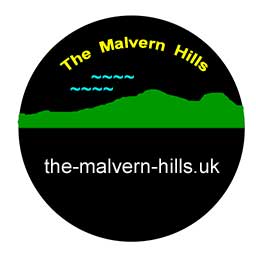
Back to top
If you would like to either suggest changes or offer
additonal material for this page please email the webmaster
|

